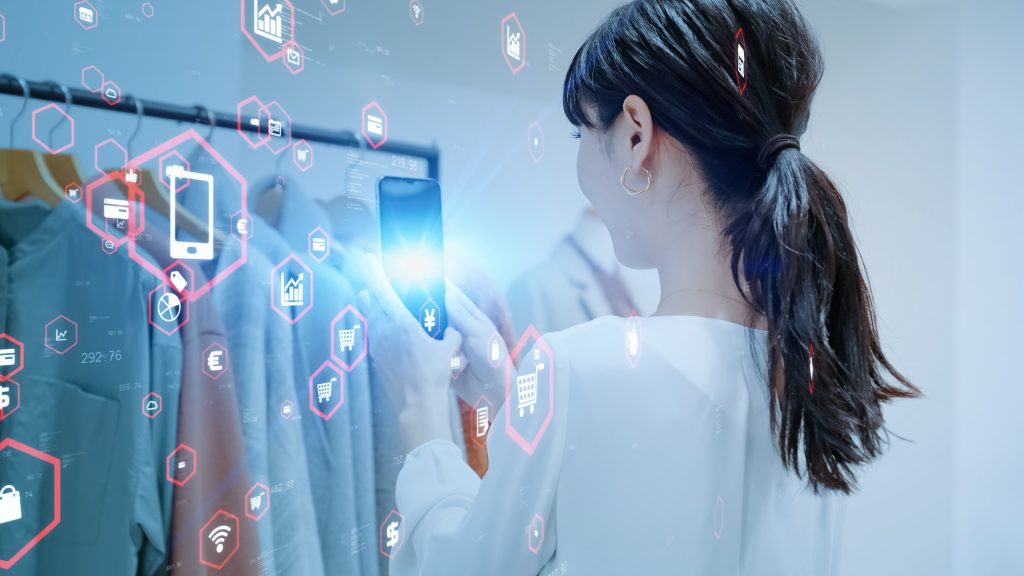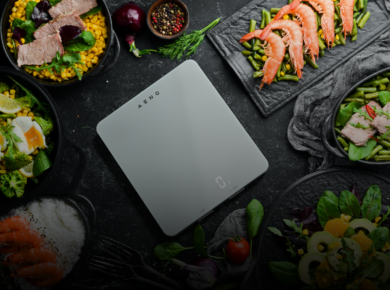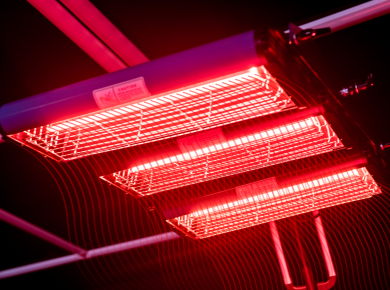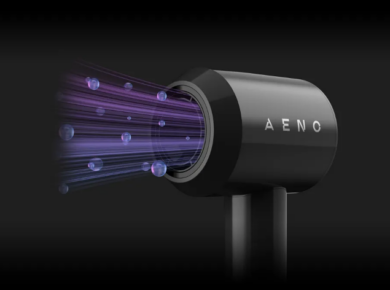According to IoT Analytics research, by the end of 2021 – beginning of 2022, there were already 12.2 billion IoT devices worldwide, while their number grew by 8% over the year. The Internet of Things is not only smart home appliances with the ability to be remotely controlled via an application from a smartphone or voice assistants, which we have already become accustomed to. IoT technology is used in retail, logistics and transport, road navigation systems, medicine, construction, and even in agriculture to monitor soil and moisture conditions. The Internet of Things has become a part of our daily life. Would you like to know what IoT is, how it works and why it makes our lives more comfortable?

What is the Internet of Things in simple terms?
The concept of “Internet of Things” (abbreviated as IoT) is a system of interconnected devices connected to the Internet and interacting by exchanging information over a network without the need for human contact with a computer or other people.
The Internet of things includes the physical devices (“things”), special software, technologies, protocols and ways of connecting to the network, received and transmitted data (big data) that can be collected, analyzed and used to improve operations. IoT is usually divided into consumer IoT and industrial IoT. Smart Home industry is closely related to consumer IoT.
How does the Internet of Things work?
The IoT ecosystem is built from smart devices connected to the Internet, which use built-in elements (processors and sensors) to capture, accumulate and work with indicators of the external environment. IoT devices exchange collected sensor data by connecting to the hub, where information is either sent directly to cloud storage or processed and analyzed on-site. Such smart devices perform most of their functions without direct human intervention after they are configured based on the information they receive from each other. In this case, the user can access information, data statistics and change settings for themselves.
The connection protocols, network type, and communications used with these various devices are highly dependent on the specific IoT platform and its technological and functional capabilities.
IoT uses cloud storage, artificial intelligence (AI) and machine learning technologies to simplify and speed up the data collection process and automate and optimize analytics.
Why is the Internet of Things important?
The Internet of Things makes our lives easier, helps us manage our time more efficiently, and removes much of the routine. IoT solutions can not only make the house “smart” with the help of Smart Home systems but also automate business and industrial enterprises. IoT provides an opportunity for b2b users to follow the processes, providing information about everything in the company: from the level of equipment performance to the logistics structure.
Smart solutions give businesses the opportunity to increase the level of process automation and reduce costs. All this generally reduces the cost of production and transportation and improves the quality of services.
Why is Internet of Things needed and where is it used?
Many companies across a wide range of industries are using IoT technologies to increase productivity, better understand customers, and improve overall business performance.
The benefits that IoT-based solutions provide can be either unique to any one industry or universal. IoT technologies help solve various problems:
- automate production processes and track the progress of business projects;
- monitor and analyze customer behavior to improve the quality of service;
- monitor the work of employees and monitor the implementation of KPI;
- integrate and adapt business models;
- use resources efficiently.
The Internet of Things is most prevalent in manufacturing, transportation, and utilities, where sensors and other smart devices are used. IoT technologies have also found options for effective use in agriculture, for automating the management of urban infrastructure. Internet of Things is being implemented in many areas, including medicine and retail.
Agriculture

Smart systems based on IoT technologies help to control and maintain the desired level of many indicators: illumination, temperature, air and soil humidity, soil acidity in the fields. All this data is collected using connected sensors. The Internet of Things also plays an important role in the automation of irrigation systems – automatic watering.
Smart cities

In a smart city, the deployment and scaling of IoT systems: smart street lighting, smart utility meters, traffic control systems and air pollution monitoring allow reducing traffic, saving energy, and monitoring the environmental situation.
Smart sensors and video surveillance are used to control urban infrastructure. This allows you to optimize costs and improve the quality of life of the population.
Home and industrial automation enable the use of IoT to monitor and control mechanical and electrical systems in buildings, industrial facilities and warehouses. Smart waste management systems in smart cities can help significantly reduce waste and energy consumption.
Electricity costs can be reduced with sensors that determine the amount of light needed based on the number of people in the room. You can also automate the maintenance of a comfortable temperature – turn on the air conditioner at a certain high temperature or if the sensor detects that the room is full of people. Heating in the office can be turned off automatically when an employee leaves for home.
Logistics and transport

IoT technologies make it possible to optimize the delivery of goods and the operation of the transport system. Their implementation provides tracking of equipment operation parameters, routes and location.
IoT-based tools monitor real-time data on the movement of an object (car or truck), and coordinate navigation.
The cars themselves can also be equipped with special sensors – for example, sensors can report the level of tire pressure or tire damage so that the driver can fix the problem in a timely manner.
Smart Home

From the point of view of the mass consumer, this is perhaps the most understandable area of application of IoT technologies. This includes smart home appliances controlled via a smartphone: robotic vacuum cleaners, food processors, refrigerators and kettles; and entire smart home systems with air humidity, smoke and door opening sensors, equipped with connected heating, lighting and other devices. All these smart devices can exchange information with each other and function according to preconfigured scenarios. A smart home system can combine many devices and configurations for their interaction at once. Usually, smart devices can be connected to a hub or router and configured already in the application on your smartphone. For example, always turn on the light in the hallway when you open the front door and detect movement. Operation schedules for the heater, humidifier, robot vacuum and air conditioner can also be provided. In the household appliances market, there is a trend towards the purchase of smart appliances, because they remove a significant part of the routine from a person and make life more comfortable.
Medicine

The Internet of medical things (IoMT, Smart Health) is the infrastructure of smart devices, special programs and applications, services. IoMT expands the possibilities of traditional medicine and allows doctors to provide care remotely, while collecting a sufficient base on the patient’s health status. Smart devices and IoT solutions in medicine can be of two types:
- professional for doctors and clinics;
- user devices.
Smart devices for tracking health status are very different: wearable gadgets (fitness trackers, smart watches) and sensors, blood pressure and heart rate meters. All of them collect and accumulate information. This allows the doctor to even remotely diagnose and suggest a treatment plan. Also, the user can enter data into special fitness applications and track their health indicators on their own to receive online tips and recommendations generated using artificial intelligence (AI).
In addition to directly monitoring the condition of patients, smart systems can be used by hospitals, for example, to manage the stock of medicines.
Retail

Retail has broad prospects for the implementation of the Internet of things. IoT technologies help optimize warehouse accounting, control supply logistics, interact with customers most effectively, and improve space ergonomics and processes in salerooms.
Industrial IoT

The Industrial Internet of Things (IIoT) covers many industries, including automotive, telecommunications, and energy. This direction allows you to optimize production processes at factories, automate the operation of robotic systems and reduce the cost of electricity and resources.
Pros and cons of implementing IoT technologies
The development of IoT technologies and their ever deeper introduction into everyday life expand human capabilities in many areas, delegating part of the routine to independent execution by smart systems. Main advantages of IoT solutions:
- accessibility of information from anywhere at any time from the user device;
- orchestrated work of connected smart devices and their ability to interact according to a predetermined scenario without the direct participation of a person;
- transfer of large amounts of data over a connected network between all involved devices at once;
- process automation that helps to improve the comfort of the home or the quality of business services;
- freeing up user time.
However, the growth of opportunities is inevitably associated with an increase in risks. What difficulties await an individual user or a company that has decided to implement IoT technologies in its business or production processes? Here are some possible difficulties and risks that are important to consider:
- security of confidential information;
- the growth of the number of IoT devices, which will make it more difficult to collect and manage data;
- the risk of damage to all devices in the system if an error occurs in the operation of one of them;
- the lack of a single international standard for interoperability for IoT, and therefore devices from different manufacturers may not always work correctly with each other.
However, technologies do not stand still and the depth of IoT implementation in various industries, along with the development of cloud technologies, is only increasing.
We offer you to start your acquaintance with IoT from the Smart Home direction and AENO smart home appliances, which facilitate the routine of household chores and help make life more comfortable every day. You can get acquainted with the range of products of the brand at the link: https://aeno.com









1 comment
How do IoT technologies contribute to optimizing the delivery of goods and enhancing the operation of the transport system?